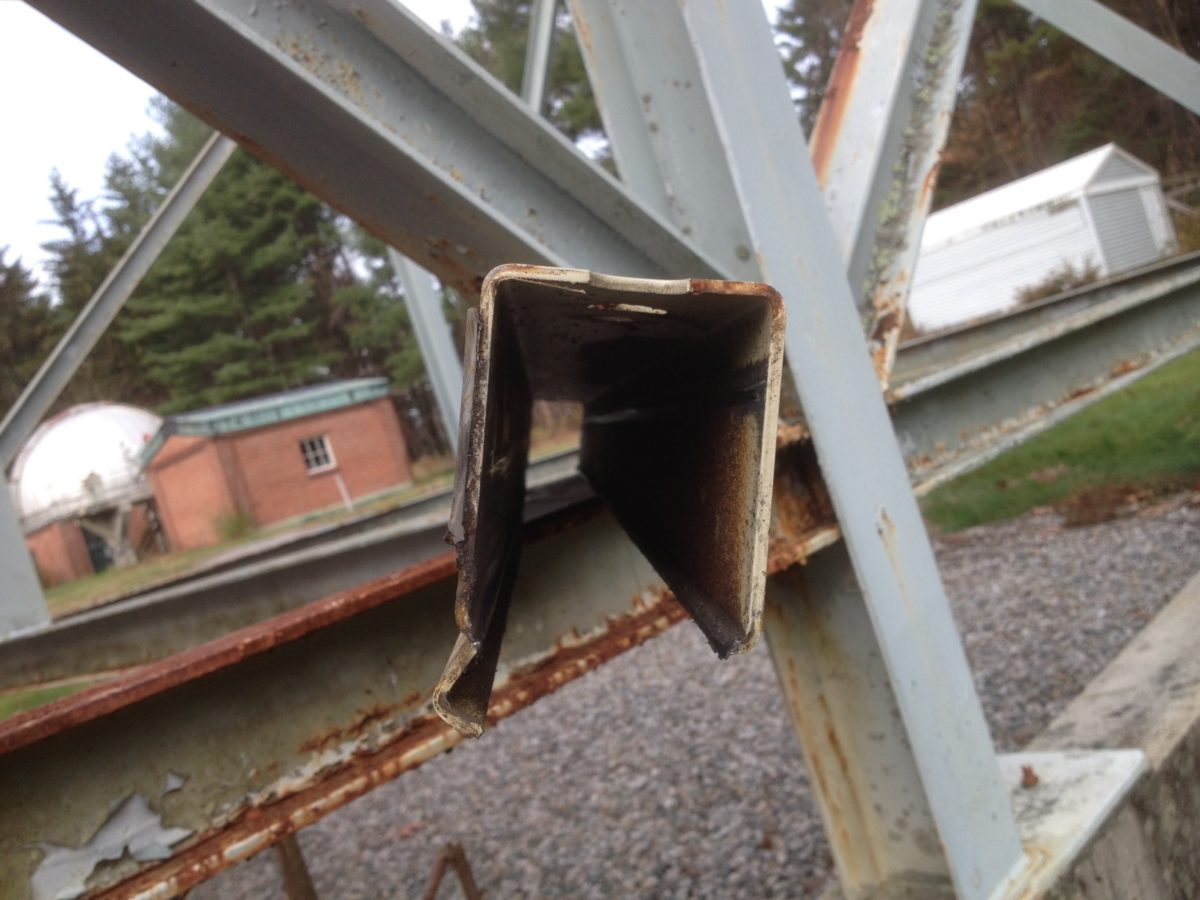Bruce Betts • Aug 28, 2014
Back on the Rails with OSETI
Sometimes the most advanced space observations, like looking for laser pulse communications from alien civilizations, get interrupted by rather mundane issues. The optical SETI (Search for Extraterrestrial Intelligence) search carried out by Paul Horowitz’s group at Harvard University using The Planetary Society All-Sky Optical SETI Telescope had just such a hiccup awhile back: it literally ran off the rails.

This is the only OSETI search that searches the whole sky (what is visible from Harvard, Massachusetts) and it searches every possible night. The 72 inch telescope and the first generation of its amazing back end electronics date from 2006, and were funded by Planetary Society members. More recently, the system had a major upgrade to the electronics designed and implemented by graduate student (at the time) Curtis Mead. Curtis has since completed his thesis and earned his Ph.D. You can read the summary of the upgrade here and listen to Paul and Curtis on a Planetary Radio episode, or if you are up for some more serious technical reading, see Curtis’ Ph.D. thesis.

Over the years, the system also was also adapted to be run completely remotely. It includes a weather station and remote cameras to ensure the right conditions for observations. Dr. Curtis Mead now operates the telescope on a regular basis remotely from California.
The telescope is inside a simple looking building that protects the telescope during inclement weather. When conditions are right for observations, the 4-ton roof is rolled back horizontally on rails. After years of use, some of the rails were completely worn out due to wear, and the roof no longer worked properly. Utilizing big cranes and heavy duty welding, new rails were put in and the roof now works more smoothly than ever, opening with lower current than ever before.

The rails are a big example of periodic repair expenses in addition to ongoing expenses required to keep searching the skies. SETI is an unusual activity: we don’t know where to look, when to look, or details of signals we are looking for including what wavelengths might be used by ET. We do know that with current Earth technology, if one went to the effort to combine big lasers and big telescopes, we could send nanosecond pulses that would outshine the Sun by a factor of 10,000 as seen from deep space. We also know that optical and near infrared (added to the OSETI telescope in the recent upgrade) wavelengths have a lot of advantages for space communication, so if ET wanted to communicate across space, pulsed lasers would be a very appealing way to do it. Most importantly, we know that if alien messages are being beamed at us and we aren’t looking, well, we won’t see them. Ongoing funding for OSETI keeps us looking. Help us continue the search!
Support our core enterprises
Your support powers our mission to explore worlds, find life, and defend Earth. You make all the difference when you make a gift. Give today!
Donate

 Explore Worlds
Explore Worlds Find Life
Find Life Defend Earth
Defend Earth

